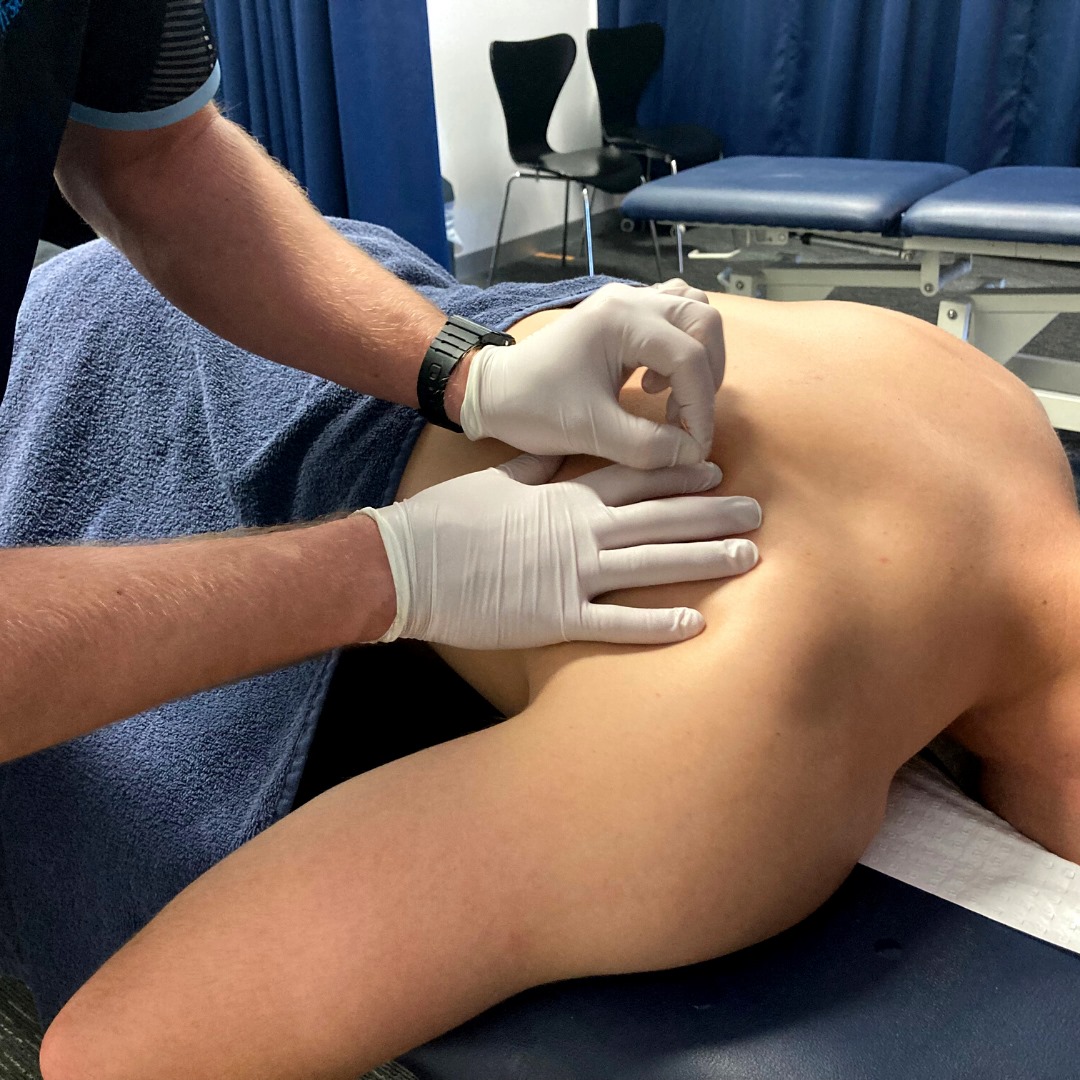Dry needling is the technique of inserting a fine needle (like an acupuncture needle) into a muscle thought to be responsible for symptoms of pain. It is an adjunct to standard therapy used by clinicians who have been specifically trained in its use. Dry needling has been shown to help facilitate a quicker recovery and reduce pain when combined with other treatment modalities (massage, exercises, etc).
How Does Dry Needling Work?
Myofascial Trigger Point Model
Myofascial trigger points are tight, highly irritable spots in taut muscle or fascia. They can be responsible for symptoms of myofascial pain syndromes including sensation changes, functional deficits (e.g., loss of strength) or symptoms such as feeling hot over the site of pain. These myofascial trigger points can be palpated by skilled therapists like our physiotherapists.
Trigger points are thought to be a result of muscle overuse or from direct trauma to a muscle. Overuse or trauma to a muscle causes the development of a taut band of muscle. Chemicals in our muscles become disrupted when these taut bands occur, causing a local lack of oxygen and blood flow in that area as well as a more acidic environment. This leads to a further chemical imbalance causing pain in an area that is disproportionate to the original injury. It can also result in pain being experienced in other nearby structures (referred pain). This toxic environment means that the body cannot complete the active relaxation process, meaning the muscle remains taut.
Trigger point dry needling can be used to relieve pain caused by trigger points. When being needled in these trigger points, a twitch response is normally elicited and is considered an essential response to correcting the biochemical imbalance described above. Patients normally experience an immediate change in signs and symptoms following a local twitch response (i.e., a reduction in pain).
Radiculopathy Model
The radiculopathy model is based on the theory that pain experienced in our periphery is due to shortened muscles within the spine that cause compression or irritation to spinal nerves. Spondylosis (degenerative spinal changes) is the most common cause for radiculopathy. This compression or irritation of the spinal nerves (radiculopathy) may sensitise our pain receptors causing pain. The “unhealthy nerves” cause the muscles innervated by them to display a contracted and hypersensitive state of pain, leading to trigger point formation.
Signs of radiculopathy include:
- Motor changes such as trigger points, reduced range of motion and thickening of tendons
- Autonomic changes such as altered temperature, excessive sweating, or goose bumps in affected areas
- Sensory changes such as increased sensation, feelings of pain to a non-painful stimulus or decreased sensation
- Trophic changes such as hair loss, skin colour changes or nail changes
Intramuscular stimulation dry needling in this model focuses on needling paraspinal muscles which are shortened to relieve the compression and irritation of the affected spinal nerves. This eliminates the sensitised pain receptors and reduces the signs of radiculopathy that the patient is experiencing.
How Does Dry Needling Help?
Dry needling desensitises super sensitive structures associated with myofascial pain, resulting in a reduction of pain, restoration of function, and normalisation of muscular tone. This is achieved by:
- Releasing shortened muscles
- Removing the source of irritation
- Promoting healing (needling causes a local inflammatory response)
In short, dry needling is an adjunct to standard therapy that can help to accelerate your recovery and relieve your pain.
Head over to our Fix Your Pain page to find the right physio for you. They will be able to do a thorough assessment and determine if this technique may be appropriate to aid in your recovery.
Want some more info? Click here to learn a bit more from the team we have done our training with.



